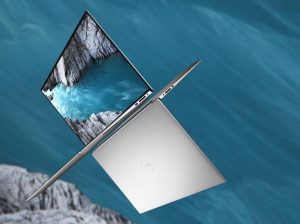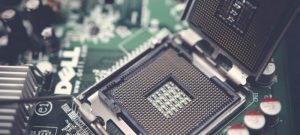How to choose the perfect PC for you?
Which computer is best suited to your needs and what are its features?
Has the time finally come to treat yourself to a new PC? Do you need to increase the productivity of your office? Do you need a laptop to work on the move? Do you want to immerse yourself in gaming for hours of entertainment? Whatever your needs, you will certainly need a PC, but how to choose the best one for your purpose? And above all, what are the important components to consider for the right purchase? With this simple guide we want to help you make the right choice.
The first question to ask ourselves is, what is the form factor of the PC we want to buy. Do I need a laptop or a desktop PC? Regardless of the use we want to make of it, we will have to understand whether we need to always have a computer with us to work, play or study on the move wherever we are, or whether it is a desktop PC. Here are the advantages and disadvantages of these two categories

Laptop.
Portable PCs can be called in various ways: laptop, notebook, netbook, notebook, etc. In broad terms and regardless of the name they are exactly the same machine. In fact, by purchasing a portable PC (more common name notebook) we will have a PC complete with screen, keyboard, mouse, webcam, speakers, microphone etc. all in a single product, which by integrating a battery inside allows you to disconnect from the electricity supply and take it wherever you want.
Desktop PC.
As is easy to imagine, the fixed PC is the one designed to usually be placed on a desk. This type of computer is equipped with a case that contains all the internal hardware components, to which all the external peripherals are connected, such as monitor , mouse, keyboard and so on.
Desktop computers are generally the first choice for those who need high performance, however they can also be designed to meet more common needs, such as browsing the Internet or using simple office programs. The strengths of a desktop computer are the stability and ease of updating the internal hardware, however, on the other hand, the fact remains that moving a desktop computer is extremely difficult, so this is the choice not to be taken into consideration for those who need a PC on the move.
Fixed PCs, in turn, can be divided into various categories, which differ from each other in their shape or use.
All-in-one PC . These are PCs whose internal components are generally contained in the monitor body, which can also be a touch screen. This type of computer is excellent for those with limited space, so in the space that the monitor alone would occupy, we will instead have the entire PC. The most famous computers of this type are Apple's iMacs.

Mini PC . These are very small computers (some of them literally fit in the palm of your hand), designed with extreme space savings on your desk in mind. They can even be clipped behind your monitor to create an incredibly compact system. However, don't be intimidated by their size, in fact, inside these mini PCs it is possible to find very high-performance hardware capable of carrying out any task with extreme ease.
Once we have identified the form factor of our new PC we need, we must evaluate some internal characteristics that determine its real performance and consequently whether it is suitable for the use we have to make of it. All the internal components of a PC are essential for its correct functioning but to simplify our choice and not get lost in the depths of IT, we will have to pay attention to 4 hardware components. CPU, RAM, Hard Disk and Video Card.
 CPU
CPU
This is the "brain" of the computer, the component that carries out all the mathematical calculations for data processing. Typically, the higher the CPU power, the better the performance. Almost all modern processors are divided into multiple cores , that is, mini-processors capable of working in parallel and therefore allowing the execution of multiple calculations. The choice of CPU is fundamental when purchasing a new PC and to better understand it I recommend you read the dedicated guide.
RAM
This is short-term memory, the one designed to store the information that the processor uses most often, so as to speed up its collection. Generally, the greater the amount of RAM installed in a computer, the better its performance when it comes to multitasking (i.e. running multiple applications at the same time) and the use of "heavier" software, such as those for video processing or digital graphics.
Hard Disk
This is the hardware component dedicated to data storage and therefore the support on which the operating system and the various software are installed. There are 2 types of hard disks , mechanical ones and SSDs. The former have a large amount of memory and are often used as an archive for our heaviest files, however their speed is limited so a system that only has mechanical hard drives will not always be fast. SSD (solid state) hard drives use a different technology that allows them to be extremely fast, giving us a snappy and fluid system, such as when running our software or turning on the PC itself. Our advice is to always opt for a system with SSD on which to install the operating system and the various software, and if you need large storage space, use mechanical hard drives to store your data.
Video Card
This is the specific unit relegated to the mathematical calculations required by graphics processing. In simple terms it is the hardware component that allows us to send the video signal to the monitor monster. To exemplify the choice we will talk about the two most common types of video cards ( GPU ): Integrated and dedicated.
The integrated GPU is an integral part of our processor and is the best choice in case we need a home PC, for browsing, studying, working or for any purpose we want except Gaming or for more elaborate applications such as video editing or photo editing. For these cases, the second category of video cards, the dedicated ones, come to our aid.
In fact, this type of GPU is an integrated and much more powerful component than the integrated one that will allow us to enjoy our favorite video games or work on elaborate video projects.
Now that we know the various types of existing PCs and their main components we will be able to choose the right product for our needs.







